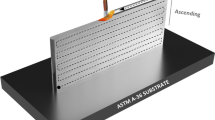Abstract
Stranded wire is the most important component of familiar mechanical equipment such as elevators, cable cars, and cranes. The quality of these products that are used on a daily basis are mainly affected by the tensile strength of stranded wire. In order to attain the purpose of economical design and a long life span of stranded wire, a less relaxation property of strand type is suitable for manufactured tools. Thus, the manufacturing industries of stranded wire need to reach the goals of high tensile strength and low relaxation. To ensure the required quality of stranded wire, the strand pull test and the long period relaxation test are two important quality assurance tests. There are three specific items of the tensile strength test that belong to the larger-the-better quality type. The quality type of the smaller-the-better is for the long period relaxation test. However, many existing methods are able to measure process capability for the product with a single quality characteristic although it cannot be applied to most products with multiple properties. Thus, the indices of C pu and C pl , for the larger-the-better and the smaller-the-better quality type respectively proposed by Kane [5], are quoted and combined to propose a new index to evaluate the quality of multiple characteristics of stranded wire in this article. The principle of statistics is then used to derive the one-to-one mathematical relationship of this new index and ratio of satisfactory production process. Finally, the procedure and criteria to evaluate the quality of stranded wire is proposed. This integrated multi-quality property capability analysis model can be used to evaluate the multi-process capabilities and provide continuous improvements on the manufacturing process of stranded wire.
Similar content being viewed by others
References
American society for testing and materials committee (1998) ASTM A 416-98, Standard specification for uncoated seven-wire stress-relieved strand for prestressed concrete, p 416
Euronorm 138-78 (1978) Prestressing steels. European Normal
Doi A et al (1971) Japanese report on cases of spontaneous rupture and laboratory research. Federation Internationale de la Precontrainte (FIP) Symposium, Stress Corrosion, Delft
Doi A, Tomoika H et al (1975) Physical properties of prestressing steel at low and elevated temperatures. Report No DRG75–04, Shinko Wire Co Ltd, Amagasaki, Japan
Kane VE (1986) Process capability indices. J Qual Technol 18(1):41-52
Chan LK, Cheng SW, Spiring FA (1988) A new measure of process capability: Cpm. J Qual Technol 20:162–175
Chou YM, Owen DB (1989) On the distribution of the estimated process capability indices. Commun Stat Theory Methods 18:4549–4560
Boyles RA (1991) The Taguchi capability index. J Qual Technol 23(1):17–26
Pearn WL, Kotz S, Johnson KL (1992) Distribution and inferential properties of process capability indices. J Qual Technol 24:216–231
Boyles RA (1994) Process capability with asymmetric tolerances. J Tolerances Commun Stat Simul Comput 23(3):615–643
Greenwich M, Jahr-Schaffrath BL (1995) A process incapability index. Int J Qual Reliab Manage 12(4):58–71.
Chen KS (1998) Incapability index with asymmetric tolerances. Stat Sinica 8:253–262
Vännman K, Deleryd M (1999) Process capability plots – a quality improvement tool. Qual Reliab Int 15:213–217
Pearn WL, Chen KS (1988) Multiprocess performance analysis: a case study. Qual Eng 10(1):1–8
Chang PL, Hwang SN, Cheng WY (1995) Using data envelopment analysis to measure the achievement and change of regional development in Taiwan. J Environl Manage 43:49–66
Pearn WL, Chen KS (2002) One-sided capability indices cpu and cpl: decision making with sample information. Int J Qual Reliab Manage 19(3):221–245
Author information
Authors and Affiliations
Corresponding author
Appendix
Appendix
/***************************************************************/;
/* SAS PROGRAMING--p-value */;
/***************************************************************/;
/* H0:Cpoi>=1.436 (P-VALUE) */;
OPTIONS REPLACE PAGESIZE=58 LINESIZE=78 NODATE;
DATA NCENT;
INPUT w @@;
n=16;v=1.436;bn=0.949;
D=3*SQRT(n)*v;
x=3*SQRT(n)*w/bn;
PV=PROBT(X,15,D);
FORMAT PV 6.4;
CARDS;
0.1359 0.2468 0.0484 −0.0145 1.7553 1.8348 1.4810 0.6879 1.5900 1.6867 1.7774 1.6805
;
PROC PRINT DATA=NCENT;
VAR W PV;
RUN;
Rights and permissions
About this article
Cite this article
Sung, WP., Chen, KS. Evaluation model for multi-process capabilities of stranded wire. Int J Adv Manuf Technol 24, 425–432 (2004). https://doi.org/10.1007/s00170-003-1784-x
Received:
Accepted:
Published:
Issue Date:
DOI: https://doi.org/10.1007/s00170-003-1784-x




